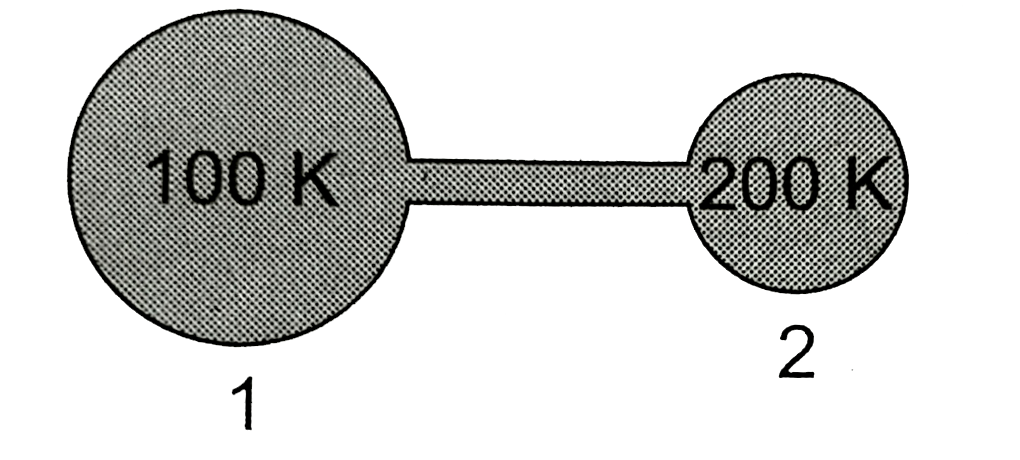Two flasks A and B of 500 mL each are respectivelly filled with O2 and SO2 at 300 K and 1 atm. Pressure . The flasks will contain:
the same number of atoms
the same number of molecules
more number of moles of molecules in flask A as compared to flask B
the same amount of gases
The correct Answer is:b
To solve the problem, we need to determine the number of molecules in two flasks, A and B, which are filled with O2 and SO2 respectively, under the same conditions of temperature and pressure.
1. Identify Given Data:
- Volume of each flask (V) = 500 mL = 0.5 L (since 1 L = 1000 mL)
- Temperature (T) = 300 K
- Pressure (P) = 1 atm
2. Use Ideal Gas Law:
The ideal gas law is given by the equation:
PV=nRT
where:
- P = pressure
- V = volume
- n = number of moles
- R = ideal gas constant (0.0821 L·atm/(K·mol))
- T = temperature
3. Calculate Number of Moles for Each Gas:
Since both flasks are under the same conditions, we can calculate the number of moles for either gas. Let's calculate for O2:
n=PVRT
Substituting the values:
nO2=(1 atm)(0.5 L)(0.0821 L⋅atm/(K⋅mol))(300 K)
nO2=0.524.63≈0.0203 moles
Since the conditions are the same for SO2:
nSO2=(1 atm)(0.5 L)(0.0821 L⋅atm/(K⋅mol))(300 K)≈0.0203 moles
4. Conclusion:
Since the number of moles of O2 and SO2 are equal, according to Avogadro's hypothesis, the number of molecules in both flasks will also be equal.
Thus, both flasks A and B will contain the same number of molecules.
Final Answer:
Both flasks A and B will contain the same number of molecules.
---
- Volume of each flask (V) = 500 mL = 0.5 L (since 1 L = 1000 mL)
- Temperature (T) = 300 K
- Pressure (P) = 1 atm
The ideal gas law is given by the equation:
PV=nRT
where:
- P = pressure
- V = volume
- n = number of moles
- R = ideal gas constant (0.0821 L·atm/(K·mol))
- T = temperature
Since both flasks are under the same conditions, we can calculate the number of moles for either gas. Let's calculate for O2:
n=PVRT
Substituting the values:
nO2=(1 atm)(0.5 L)(0.0821 L⋅atm/(K⋅mol))(300 K)
nO2=0.524.63≈0.0203 moles
nSO2=(1 atm)(0.5 L)(0.0821 L⋅atm/(K⋅mol))(300 K)≈0.0203 moles
Since the number of moles of O2 and SO2 are equal, according to Avogadro's hypothesis, the number of molecules in both flasks will also be equal.
Both flasks A and B will contain the same number of molecules.
Topper's Solved these Questions
- GASEOUS STATEBook:NARENDRA AWASTHI ENGLISHChapter:GASEOUS STATEExercise:Level 2
Explore 30 Videos
- GASEOUS STATEBook:NARENDRA AWASTHI ENGLISHChapter:GASEOUS STATEExercise:Level 3 Passage 1
Explore 4 Videos
- ELECTROCHEMISTRYBook:NARENDRA AWASTHI ENGLISHChapter:ELECTROCHEMISTRYExercise:Subjective problems
Explore 14 Videos
- IONIC EEQUILIBRIUMBook:NARENDRA AWASTHI ENGLISHChapter:IONIC EEQUILIBRIUMExercise:Subjective problems
Explore 1 Video
Similar Questions
Two flasks A and B have equal volume at 100K and 200K and have 4atm and 1atm pressures, respectively. The flasks A contains H2 gas and B contains CH4 gas. The collision diameter of CH4 is twice that of H2.Which of the following is true about the mean free path (λ) of the molecules?
(a) λ of H2 is twice that of CH4.
(b) λ of CH4 is twice that of H2.
(c) λ of H2 is four times that of CH4.
(d) λ of CH4 is four times that H2.
View SolutionFour one litre flaske are separately filled with the gases H2,He,O2andO3 at the same temperature and pressure. The ratio of total number of atoms of these gases present in different flask would be:
View SolutionFour flask of 1 litre capacity each are separately filled with gases H2,He,O2 and O3. At the same temperature and pressure, the ratio of the number of atoms of these gases present in different flask would be :
View SolutionTwo flask A and B of equal capacity contains CO2 and O2 gas under similar conditions their ratio of atoms is :-
View SolutionTwo flasks X and Y have capacity 1 L and 2 L respectively and each of them contains 1 mole of a gas. The temperature of the flasks are so adjusted that average speed of molecules in X is twice as those in Y. The pressure in flask X would be
View SolutionFour one litre flasks are separately filled with the gases CO2, F2, NH3 and He at same room temperature and pressure. The ratio of total number of atoms of these gases present in the different flasks would be
View SolutionFigure shows two flasks connected to each other. The volume of the flask 1 is twice that of flask 2. The system is filled with an ideal gas at temperature 100K and 200K respectively. If the mass of the gas in 1 be m then what is the mass of the gas in flask 2

View SolutionA flask of 4.48L capacity contains a mixture of N2 and H2 at 0∘C and 1atm pressure. If thed mixture is made to react to form NH3 gas at the same temperature, the pressure in the flask reduces to 0.75atm. Select statement(s) :
View SolutionConsider Three one -litre flasks labeled A,B and C filled with the gases NO,NO2, and N2O, respectively, each at 1 atm and 273 K. In which flask do the molecules have the highest average kinetic energy?
View SolutionTwo flasks A and B have equal volume. Flask A contains hydrogen at 300 K while flask B has an equal mass of CH4 at 600 K.
which flask contains larger number of molecules?
b. In which flask is the pressure greater and by how many times?
View Solution

